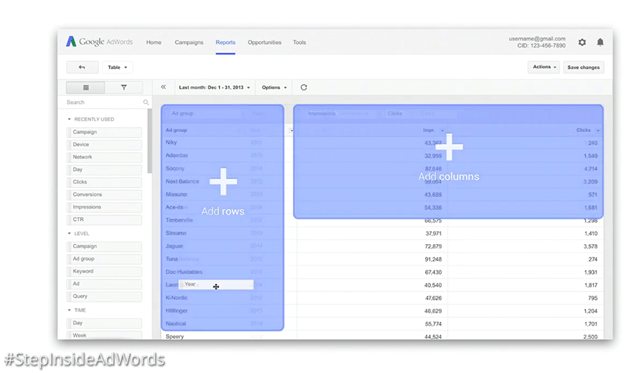Advertisers have been running scared ever since Google announced that they’d be releasing some big new changes to the AdWords platform on April 22. Now we finally know what they’ve been working on, and it looks like the fears were largely unfounded: Google isn’t taking away any of our toys. Instead, we’re going to be getting some cool new features and improvements over the next few months.
Here’s an overview of the new AdWords features and what it means for advertisers.
Enterprise-Class AdWords Reporting & Management Features
Probably the most exciting part of this (relatively dull) announcement is the upcoming release of some heavy-duty management and reporting features aimed at AdWords “power users.”
These new features include:
- Enhanced reporting – Google is introducing new advanced reporting features, including visualization tools and drag-and-drop interface. This is basically like Excel for AdWords. Instead of having to transfer all your data to Excel for manipulation, you’ll be able to create reporting directly in AdWords with live data.
- Bulk editing capabilities – Soon users will be able to take bulk actions on multiple ads/ad groups/campaigns all at once, something you previously could only do in a tool like AdWords Editor.
- Automated bidding tools – The new automated bidding options allow you to either maximize conversions or maximize revenues. This type of automated bidding was previously only available in third-party platforms.
- “Draft mode” – Google is released a “lab” feature that allows you to make changes in “draft mode.” Since advertisers will be able to see the hypothetical results of those changes, Google says this will enable more data-driven decision making in AdWords.
Who does this affect? Although Google is aiming these features at big spenders and enterprises, anyone can take advantage of these cool features. There is no minimum spend/size requirement.
What’s the big takeaway? This is the best part of the announcement. However, all these new power-user features could be a threat to AdWords Editor (which I predicted months ago was headed for the axe) and third-party AdWords management platforms like Kenshoo and Marin. If Google is going all in on producing enterprise SEM features, there’s less obvious value-add for these software platforms.
New Features Focused on Mobile App Market
Google also announced several new features designed to help makers of mobile apps increase visibility of their products, push more app downloads, and increase engagement within downloaded apps. App promotion ads were already available in AdWords, but the new options make it possible to:
- Target users based on their existing apps – Advertisers will be able to reach prospects based on the type of apps they already have on their mobile devices, how frequently they use these apps, as well as their app purchase/download history.
- Get more impressions for app ads – These will start getting pushed out to people viewing YouTube videos on mobile.
- Increase engagement in apps – Google said that 80% of apps are used once and then deleted. To increase usage of downloaded apps, you’ll soon be able to push consumers into the apps they’ve already installed (they called this “app deep linking”).
- Better measure app engagement – AdWords will also be introducing better app conversion tracking, from installation to engagement and in-app purchases.
This is pretty cutting-edge stuff.
Who does this affect? Obviously, if you market an app you’ll want to take advantage of these new features pronto.
What’s the big takeaway? If you don’t have an app, maybe it’s time to get one! Google is introducing this functionality because it knows that users are increasingly flocking to mobile and that apps rule in the mobile space.
More Investment in Estimated Total Conversions
The final (and dullest) part of the announcement was around Estimated Total Conversions. Google promised that they will continue to invest in improving measurement of mobile campaign ROI, including measurement of cross-device conversions and mobile-initiated conversions that lead to physical in-store sales.

There weren’t a lot of details around what exactly this will entail, however.
Who does this affect? Everyone, because everyone will eventually be advertising on mobile, even if you’ve found ways around it so far.
What’s the big takeaway? Google really, really wants you to advertise on mobile. They’re trying to make it easier as well as to prove that mobile ads work. The good news is, we’re getting new/improved functionality and Google isn’t taking anything away, like they did last year with the mandatory switch to Enhanced Campaigns. (In other words, stop panicking. This is good, not bad.)
Have questions about the big announcement? Fire away in the comments!
Photos via Step Inside AdWords event live coverage on April 22.





